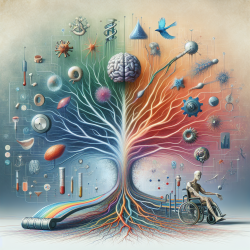Exploring the Evolution of Pain Research
In the realm of modern neuroscience, the understanding and measurement of pain have undergone significant transformations. The research article "Objectifying 'Pain' in the Modern Neurosciences: A Historical Account of the Visualization Technologies Used in the Development of an 'Algesiogenic Pathology', 1850 to 2000" provides an in-depth look at how pain has been objectified and visualized over the years.
The Historical Context
From the 1850s to the 1880s, the Leipzig school of experimental psychophysiology laid the groundwork for the objectification of pain as a physiological value. This era marked the beginning of refined psychological test repertoires and clinical measurement techniques that were progressively paired with imaging approaches. These developments were crucial in understanding neuropathological pain etiology.
Technological Advancements in Pain Visualization
With the advent of electroencephalography in the mid-20th century, and the use of brain stimulation technologies and modern neuroimaging, the objectification of pain phenomena took firm root in Western medicine. This shift was characterized by the development of key imaging technologies and landmark events that shaped the field of "algesiogenic pathology."
Implications for Practitioners
For practitioners, understanding the historical context and technological advancements in pain research can enhance their ability to diagnose and treat pain more effectively. By recognizing the evolution of pain measurement and visualization, practitioners can appreciate the complexity of pain as both a physiological and psychological phenomenon.
Encouraging Further Research
The historical account of pain research encourages practitioners to delve deeper into the subject. Understanding the roots of pain measurement and the integration of neuroimaging can inspire new research directions and innovative treatment approaches.
Conclusion
The journey of pain research from the 19th century to the present day highlights the importance of technological advancements and interdisciplinary collaboration. As practitioners continue to explore the complexities of pain, they contribute to a deeper understanding of this multifaceted phenomenon.
To read the original research paper, please follow this link: Objectifying “Pain” in the Modern Neurosciences: A Historical Account of the Visualization Technologies Used in the Development of an “Algesiogenic Pathology”, 1850 to 2000










